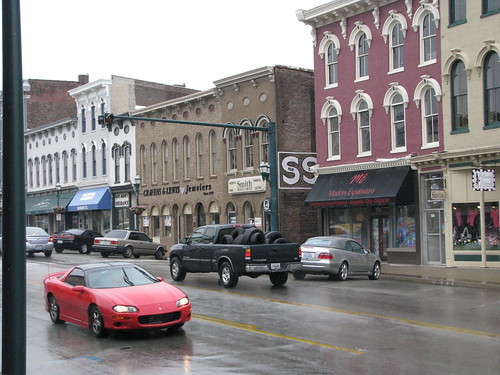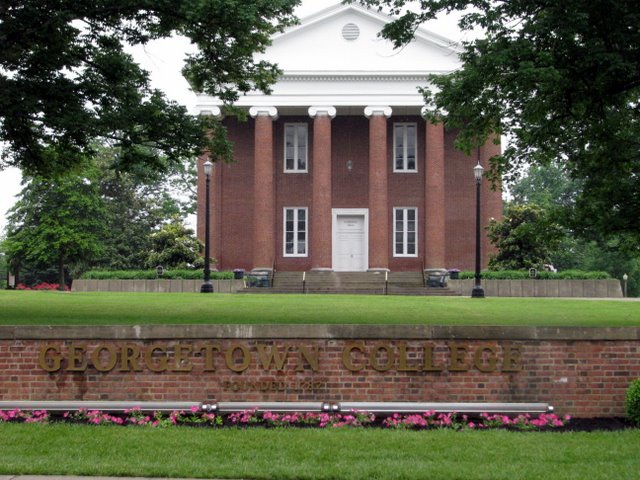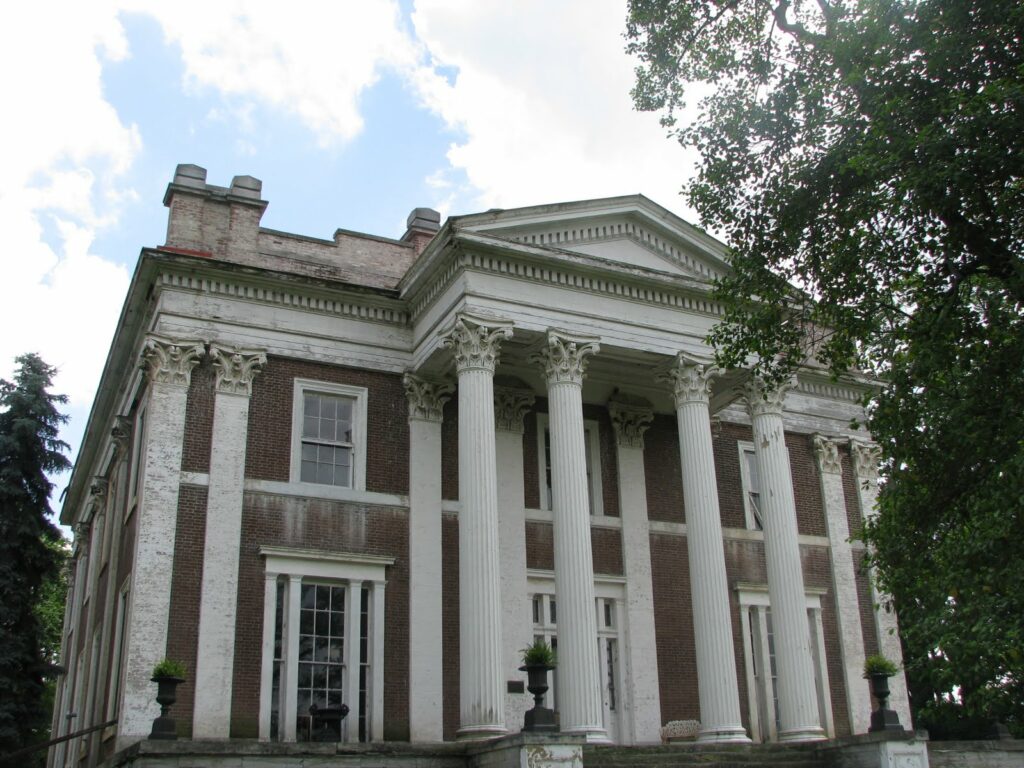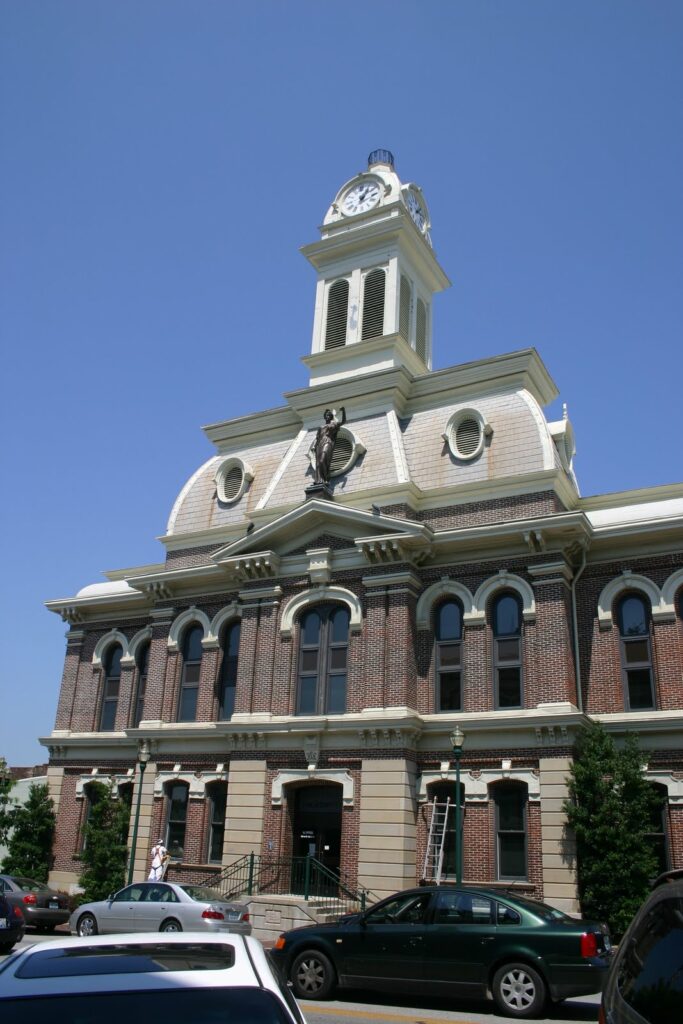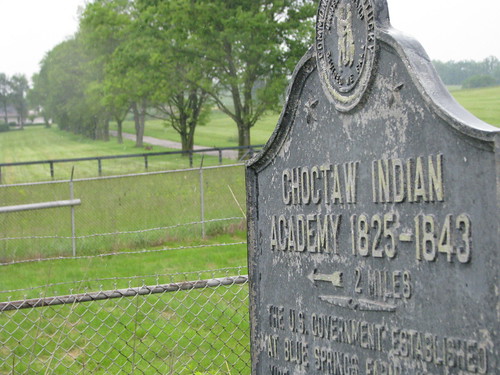 |
| Choctaw Indian Academy, Scott County, Ky. |
I’m realizing that photographs of historic markers probably aren’t as enjoyable for you as pictures of buildings, landscapes, etc. So I tried to make this one a little more artistic. And if I for a minute actually thought that the old academy still existed, I would have trekked the two miles to find it. That said, I figured it was long gone. I may be mistaken as I was able to find pictures at www.thepeopleofthehuntingground.com.
The History of Scott County, Kentucky provides an account of the indian school:
Lafayette in his tour of the country in that year, (1825) visited it at Blue Springs, and a great feast was prepared for him by the neighborhood, the ladies making a cheese for the occasion weighing 500 pounds. In 1831 the school was removed from Blue Springs to White Sulphur Springs, which was also on a farm owned by Col. Johnson . . . There were generally from two to three hundred Indian boys in attendance, and it brought a considerable revenue to Col. Johnson’s exchequer. Some of the boys afterward filled prominent positions in the country—several became preachers of the Gospel.
Several other of the indian boys would becomes chiefs of their respective tribes. The Col. Johnson mentioned above was Col. Richard Mentor Johnson who would serve as Vice President from 1837-1841 during the administration of President Martin Van Buren. There is some controversy surrounding Johnson’s establishment of the school and his intentions; it seems that he was quite good as securing government contracts, including the establishment of the school.
An 1838 student log shows students from several tribes: Choctaw, Potawatomi, Chickasaw, Cherokee, Seminole, Creek, Prarieduchien, Chicaga, Miami, and Quapaw. The school ultimately closed when financial support from the tribes dried up (they were being forced west into Oklahoma). The OSU Digital Library is a tremendous source of information about the Academy.
My flickr for Choctaw.

